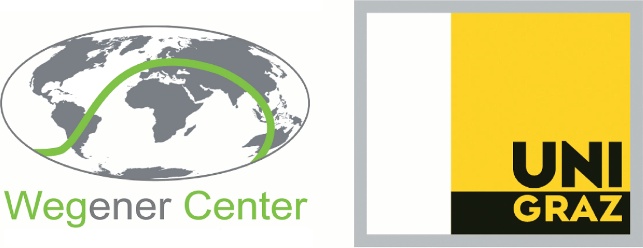
GNSS remote sensing, principles and scientific applications (climate science)
Abstract
J. Wickert, F. Alshawaf, C. Arras, M. Asgarimehr, G. Dick, S. Heise, K. Larson, X. Li, C. Lu, L. Peraza, M. Ramatschi, M. Semmling, T. Schmidt, T. Simeonov, S. Vey, F. Zus, H. Schuh German Research Centre for Geosciences GFZ, Potsdam, Germany University of Colorado, Boulder, U.S. GNSS atmospheric remote sensing was successfully established during the last two decades and evolved into a major application for high precision GNSS. The most prominent example for this development is the use of GNSS atmospheric data to improve day-by-day regional and global weather forecasts since 2006. Globally distributed vertical profiles of refractivity, temperature and water vapour are derived from satellite based GNSS data (Radio Occultation, RO). Ground based measurements, provided by global and regional GNSS networks, allow for the derivation of vertically (IWV) or along the line-of-sight integrated water vapour (SWV). Another important GNSS remote sensing technique, the exploitation of Earth reflected signals (GNSS Reflectometry, GNSS-R), is not yet operationally applied. But the huge potential for the determination of various physical parameters, as, e.g., sea surface height, wind speed over water and soil moisture on regional and global scales is recognized by the Earth Observation community. Therefore GNSS-R is recently a major challenge of international geophysical research. We review related activities at the German Research Centre for Geosciences GFZ and introduce recent results. The status of the GNSS-RO experiments aboard the satellites GRACE-A, TerraSAR-X and TanDEM-X, which are coordinated by GFZ, is reviewed. Examples of GNSS RO applications are given, as, e.g. climatological investigations of the global vertical temperature structure or the detection of ionospheric irregularities in the E-region. We also focus on ground based activities for GNSS water vapour monitoring. Observations of a global and regionally densified German network, with about 600 stations in total, are processed in near-real time to operationally provide IWV data. These data are assimilated into atmospheric models by several European weather centers. Current research activities are focused on the generation and meteorological application of GNSS based slant data, on real-time and multi-GNSS meteorology. In addition, climatological investigations are described to analyse long-term trends of the atmospheric water vapour over Germany but also as part of the Global Climate Observing System (GCOS) of the WMO (World Meteorological Organization). Multipath data from standard GNSS receivers are used to derive information on soil moisture, vegetation and snow properties. This technique exhibits a large potential to get geophysical parameters for Earth surface monitoring from the existing global and regional GNSS networks. GFZ also applies dedicated GNSS receivers aboard flight and ship platforms to derive sea surface heights using the GNSS-R phase altimetry technique. Other research activities contribute to the preparation of satellite missions for geophysical GNSS-R applications on a global scale. The most prominent current examples are the ESA mission GEROS-ISS for global sea surface monitoring and the Earth Explorer 9 proposal G-TERN for polar, ocean and land surface research.Short Biography
Jens Wickert graduated in Physics at the Technical University Dresden and received his PhD degree from the Karl-Franzens-University Graz in 2002. Since 1999 he is with GFZ and currently responsible for the GNSS remote sensing and for the Atmosphere and Climate Research programme. He holds a joint professorship of GFZ and Technische Universität Berlin on GNSS Remote Sensing, Navigation and Positioning and is deputy head of GFZ section 1.1 “Space Geodetic Techniques”. He was Principal Investigator of the pioneering GPS Radio Occultation experiment aboard the German CHAMP satellite and is currently PI of the GEROS-ISS experiment from ESA for GNSS reflectometry. He is also coordinating a recent Earth Explorer 9 proposal on GNSS reflectometry (G-TERN). Jens Wickert is author/co-author of around 170 ISI listed publications on GNSS Earth Observation and received several research awards.